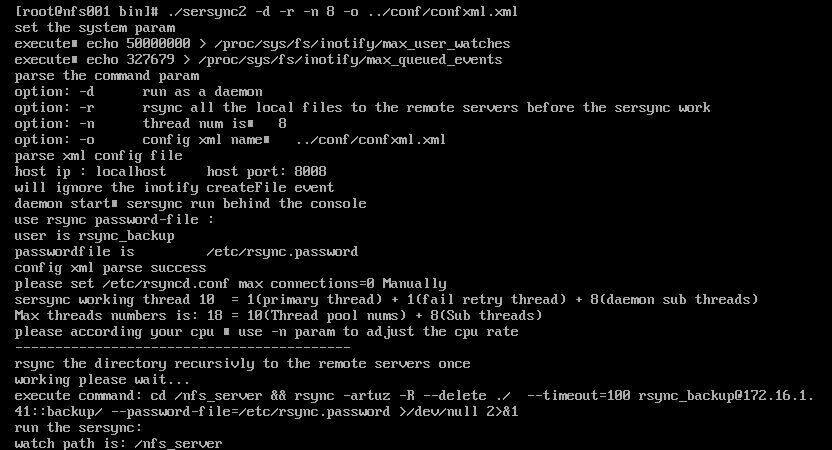Linux如何从零开始搭建rsync+serync服务器(centOS6)
[root@nfs001 /]# tree /application/
/application/
`-- serync2.5.4
|-- bin
| `-- sersync2
|-- conf
| |-- confxml.xml
| `-- confxml.xml.ori
`-- logs
`-- rsync_fail_log.sh
2.编辑confxml.xml,修改如下:
<inotify>
<delete start="true"/>
<createFolder start="true"/>
<createFile start="true"/>
<closeWrite start="true"/>
<moveFrom start="true"/>
<moveTo start="true"/>
<attrib start="false"/>
<modify start="false"/>
</inotify>
<sersync>
<localpath watch="/nfs_server/">
<remote ip="172.16.1.41" name="backup/"/>
<!--<remote ip="192.168.8.39" name="tongbu"/>-->
<!--<remote ip="192.168.8.40" name="tongbu"/>-->
</localpath>
<rsync>
<commonParams params="-artuz"/>
<auth start="true" users="rsync_backup" passwordfile="/etc/rsync.password"/>
<userDefinedPort start="false" port="874"/><!-- port=874 -->
<timeout start="true" time="100"/><!-- timeout=100 -->
<ssh start="false"/>
</rsync>
<failLog path="/application/serync2.5.4/logs/rsync_fail_log.sh" timeToExecute="60"/><!--default every 60mins execute once-->


posted on 2017-12-24 13:43 William126 阅读(349) 评论(0) 编辑 收藏 举报



